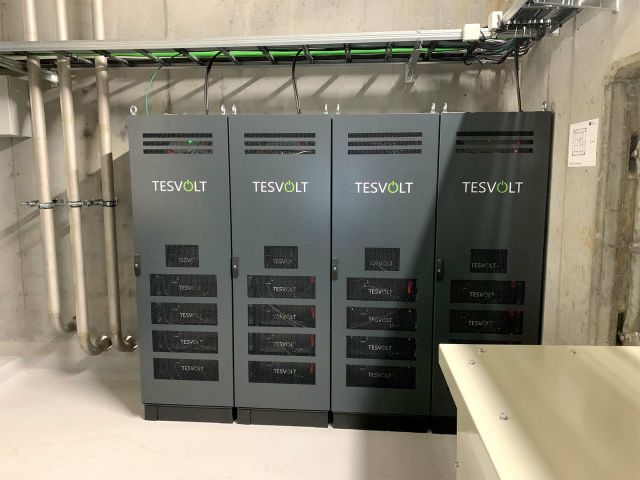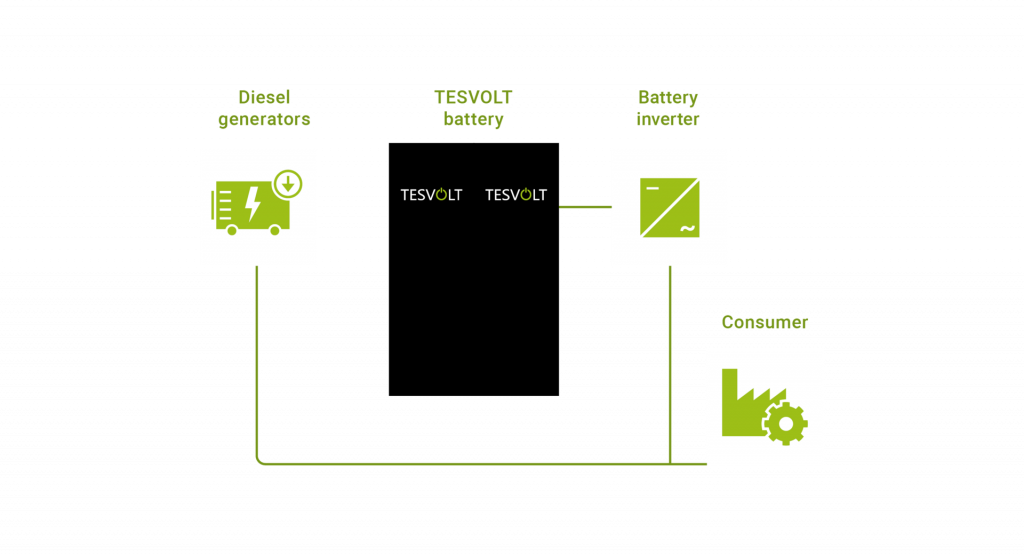• A proximately 60 % reduction in total diesel consumption
In raising a generation of salmon over a period of 18 month, the company saves between 150,000 and 200,000 euros and also significantly reduces its carbon footprint.
• Drastically decreased maintenance costs
The Kvarøy team now only needs to change the diesel generators’ oil biannually instead of each month. An oil change takes an entire day and costs up to 1,000 euros, meaning the company has now won back ten working days
and saves 10,000 euros per year in oil changes.
• Improved working conditions
Since the diesel generators are only in operation for short periods of time (3 hours/day instead of 24), noise levels and vibration effects are lowered and the fish farm produces fewer emissions.
• Transparent
The battery system can be monitored and controlled from land over the internet.
• Durable
The system boasts an above-average service life of up to 30 years thanks to robust Samsung battery cells and the battery management system, which optimizes cells, modules and cabinets.


 German
German Italian
Italian Dutch
Dutch


 by
by